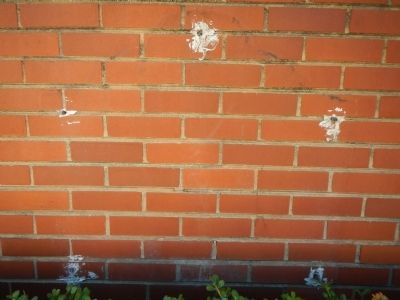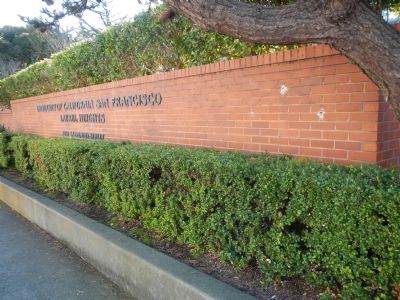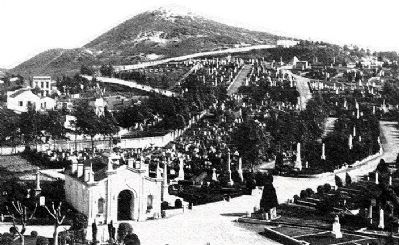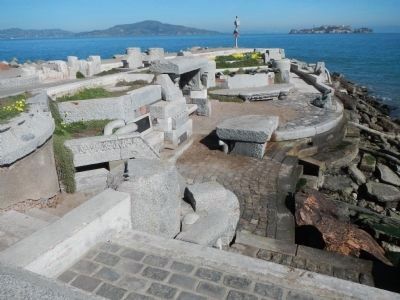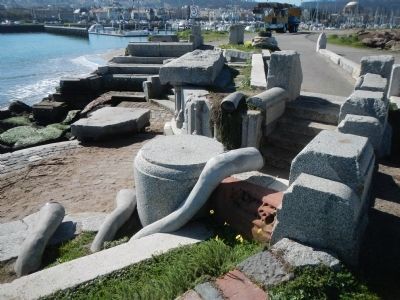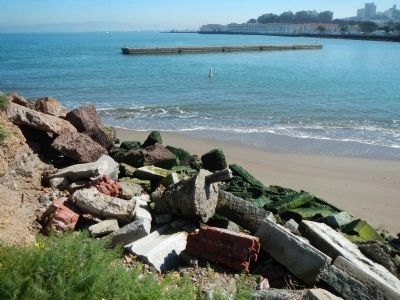Laurel Heights in San Francisco City and County, California — The American West (Pacific Coastal)
Former Site of Laurel Hill Cemetery
1854 – 1946
Inscription.
The builders of the West, civic and military leaders, jurists, inventors, artists, and eleven United States Senators were buried here – the most revered of San Francisco’s Hills (Marker Number 760.)
Topics and series. This historical marker is listed in this topic list: Cemeteries & Burial Sites. In addition, it is included in the California Historical Landmarks series list.
Location. Marker has been reported missing. It was located near 37° 47.217′ N, 122° 26.9′ W. Marker was in San Francisco, California, in San Francisco City and County. It was in Laurel Heights. Marker could be reached from the intersection of California Street and Walnut Street, on the right when traveling east. Touch for map. Marker was at or near this postal address: 3333 California Street, San Francisco CA 94118, United States of America. Touch for directions.
Other nearby markers. At least 8 other markers are within walking distance of this location. 1545 Divisadero (approx. half a mile away); St. John’s Presbyterian Church (approx. 0.6 miles away); The San Francisco Columbarium (approx. 0.6 miles away); Dante Benedetti (approx. 0.7 miles away); Lover’s Lane (approx. 0.8 miles away); Native Daughters of the Golden West (approx. 0.8 miles away); Native Daughters of the Golden West Home (approx. 0.8 miles away); Building a Historic Landscape (approx. 0.9 miles away). Touch for a list and map of all markers in San Francisco.
More about this marker. This marker is missing.
Regarding Former Site of Laurel Hill Cemetery. In 1900 Mayor Phelan signed an order prohibiting future burials within the city of San Francisco due to overcrowding and vandalism. Development pressures forces the Laurel Hill burials to be relocated the city of Colma in 1937. The majority of bodies were move to mass graves. Anyone wanting their decedents privately re-entured has to pay for it themselves. Tombstones and mausoleums left more that 90 days were repurposed for a jetty that forms the small boat harbor at the San Francisco Marina.
In 1986, Peter Richards and George Gonzales, artists in residence at the San Francisco Exploratorium, used the Laurel Hill material to create a wave-activated acoustic sculpture located on the jetty, the Wave Organ. . Through a series of pipes, waves on the bay convey their sounds to listeners at various locations in the sculpture.
Also see . . .
1. Site of Laurel Hill Cemetery - Noehill.com. This site includes a photograph of the marker before it went missing. (Submitted on January 23, 2014, by Barry Swackhamer of Brentwood, California.)
2. Streetwise: Dearly Departed - Western Neighborhoods Project. Since the 1880s there had been cries to "Remove the Cemeteries," primarily to make room for development, although this aim was often couched in rhetoric about "ghouls" and health hazards. Politics and public opinion prevented any further land to be earmarked for the dead, so on August 1, 1901, with most of the existing graveyards nearly filled up, the Board of Supervisors prohibited further burials within city limits.
This is an intriguing read. (Submitted on January 23, 2014, by Barry Swackhamer of Brentwood, California.)
3. The Wave Organ. A prototype, built at the same location, was presented as part of the New Music ’81 Festival. Though very rudimentary in nature, it generated enthusiasm and support for a permanent work. Permit acquisition and fundraising efforts by Frank Oppenheimer, Founding Director of the Exploratorium, began soon after, but actual construction did not start until September 1985, seven months after Oppenheimer’s death. The Wave Organ was completed in May 1986 and was dedicated in June to the memory of Frank Oppenheimer. (Submitted on February 27, 2015, by Barry Swackhamer of Brentwood, California.)
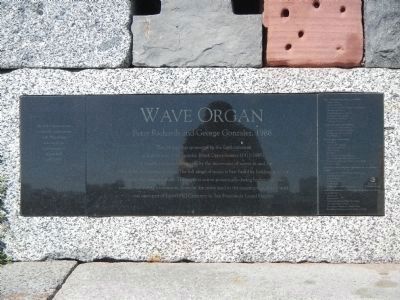
Photographed By Barry Swackhamer, February 25, 2015
5. The Wave Organ plaque
Peter Richards and George Gonzalez, 1986
This project was sponsored by the Exploratorium and dedicated to its founder Frank Oppenheimer (1912-1985). The sound you hear are created by the movement of waves in and out of a series of submerged pipes. The full range of music is best heard by holding your ear close to the listening ports. The organ is active acoustically during higher tides and sounds best during a full moon. Some of the stone used in the construction of this work was once part of Laurel Hill Cemetery in San Francisco’s Laurel Heights.
Credits. This page was last revised on February 7, 2023. It was originally submitted on January 23, 2014, by Barry Swackhamer of Brentwood, California. This page has been viewed 660 times since then and 29 times this year. Last updated on December 11, 2019, by Craig Baker of Sylmar, California. Photos: 1, 2, 3. submitted on January 23, 2014, by Barry Swackhamer of Brentwood, California. 4, 5, 6, 7. submitted on February 27, 2015, by Barry Swackhamer of Brentwood, California. • J. Makali Bruton was the editor who published this page.
